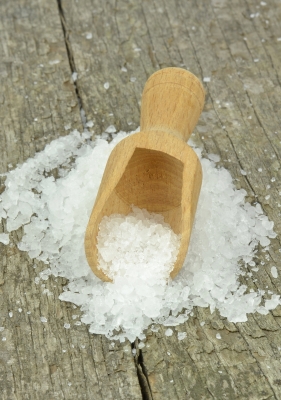Yesterday the US Centers for Disease Control published an interesting study they’d been doing on heart disease risk factors. They divided a group of 6,113 American adults into five groups and measured all the traditional stuff. You know, waist circumference, fat consumption, weight, etc.
The people in all five groups had about the same body mass index (a measure of weight for height where 25-29.9 is considered overweight – they were all about 28) and had about the same waist circumference (95 cm). And I guess those stats are interesting right there, given these were average Americans, not specifically selected for being overweight.
But one of the groups was a standout on many of the measures. They had the lowest fat consumption (just 28.9% of total calories). They had the lowest saturated fat consumption (just 9.7%). And they had the lowest cholesterol intake by a country mile (only 238mg).
This group were poster children for the low-fat lifestyle we are all encouraged to pursue. There was just one little problem, their blood work was awful. On average the folks in the low-fat group had by far the worst blood cholesterol and triglyceride (blood lipid) readings of all five groups. And they weren’t just bad, they were time-to-order-some-drugs bad.
The groupings had been done on the basis of how much added sugar was in each person’s diet (from less than 5% of calories through to 25% or more). The group that had those lousy blood results were the ones who also ate the most sugar. On average, they (1,135 people) were each eating 192 g (46 teaspoons) of added sugar per day. ‘Added sugar’ does not include the sugar in fruit, dried fruit or juices, so total sugar was likely to be appreciably higher than that.
And it wasn’t just a coincidence. As you look down the results, the amount of sugar consumed by each group directly correlated with their cholesterol and triglyceride levels. The group (893 people) that ate the least sugar (13.6 g or 3 teaspoons) had blood work right where it should be for minimal (to non-existent) heart disease risk. The high sugar folks had gained 1.27 kg in the last year. Again, weight gain consistently correlated with sugar (and not fat) consumption.
The researchers discounted the possibility that high sugar intake was just a marker for someone who ate a lot of bad food anyway. The association between sugar intake and blood lipids was independent of the fat and cholesterol components of processed foods. The link also persisted when the researchers took into account smoking, drinking and levels of physical activity. The study leaves no room for doubt that what they were observing was all down to the sugar (and the sugar alone).
The American Heart Association (AHA) is no doubt feeling pretty pleased with itself. It came out last August and told Americans they needed to dramatically reduce their sugar intake. This study backs up their advice in spades. People in the study who consume added sugar at the maximum levels recommended by the AHA (9 teaspoons per day for an adult male) ended up in the second lowest group for badness with blood fats. Not perfect, but an awful lot better than the boys and girls slugging down 46 teaspoons a day.
So what is the Australian Heart Foundation’s position on sugar? Well, not much really. They mention that “A high sugar content doesn’t necessarily make a food ‘bad’”, but point out that it isn’t so much the sugar content that’s bad as whether or not the food has other nutrients.
To our Heart Foundation, sugar is just another carbohydrate and not a particularly harmful one at that. In response to one of my earlier rants) Susan Anderson, National Director, Healthy Weight at the Australian Heart Foundation told Cardiology Update “Although associated with tooth decay… eating sugar itself is not clearly associated with other health problems.”
Surely this latest (large cohort) study finally puts a pin in that notion? Yep, sugar will definitely make your swimming togs shrink by the time summer comes around (and the odd tooth fall out), but (much more dangerously) it will also really put you on the path to death-by-heart-attack (with serious symptoms by age 38 according to these figures).
No study on fat has ever produced a result like this – ever! Not even close. So will the message on heart disease be changing here in Australia? Will we stop bagging fat and start going after the real culprit? I’m not a betting man, but I reckon the odds are slightly higher that the Storm will win the grand final – what do you think?



















Recent Comments